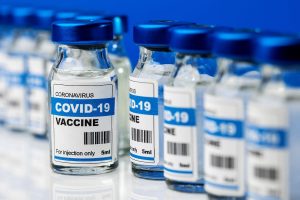FRIDAY, Sept. 25, 2020 (Healthday News) — The U.S. coronavirus death toll passed 7 million on Friday, with California the hardest hit state so far in a pandemic that has crippled the country for more than six months.
The United States has been averaging about 41,500 cases daily, down from the pandemic’s midsummer peak, but states in the Midwest and West are seeing case numbers climb, The New York Times reported.
In California, the case count has now passed 800,000, the Times reported, but the figure does not capture the state’s current situation. Recently, California has been reporting a relatively low number of new cases daily, the newspaper said.
It was less than a month ago that the United States reached 6 million cases, the Times reported. It took over three months for the country to record its first million cases.
Despite those startling case counts, herd immunity is far from sight: The head of the U.S. Centers for Disease Control and Prevention told a Senate committee on Wednesday that 90% of Americans are still at risk of contracting the virus.
“The preliminary results in the first round [of a very large, ongoing CDC study] show that a majority of our nation, more than 90% of the population, remains susceptible,” Dr. Robert Redfield testified. “A majority of Americans are still susceptible to this virus.”
At the same time, Redfield reiterated that the majority of Americans may not be able to get a coronavirus vaccine until next year.
At the same committee hearing, Dr. Anthony Fauci, director of the National Institute of Allergy and Infectious Diseases, said there would likely be only 50 million doses by December, so “it is not going to be a large proportion of the population” that receives the vaccine by the end of the year.
Dr. Stephen Hahn, head of the U.S. Food and Drug Administration, repeatedly said in his opening statement to the committee that the efficacy of a vaccine would be determined only by FDA scientists. Just this week, the agency proposed guidelines that would strengthen the vetting process of any new coronavirus vaccine.
Later on Wednesday, President Donald Trump said the White House may or may not approve those new FDA guidelines, the Times reported.
New study shows coronavirus mutating rapidly
Also on Wednesday, a new study of more than 5,000 genetic sequences of the coronavirus reveals the virus’s continual accumulation of mutations, one of which may have made it more contagious, the Washington Post reported.
But researchers did not find that these mutations have made the virus deadlier.
Every mutation is a roll of the dice, and with transmission so widespread in the United States that the virus has had plenty of opportunities to change, potentially with troublesome consequences, study author James Musser, of Houston Methodist Hospital, told the Post.
“We have given this virus a lot of chances,” Musser said. “There is a huge population size out there right now.”
The research was posted on the preprint server MedRxiv and has not been peer-reviewed. Earlier this month, a larger batch of sequences was published by scientists in the United Kingdom. Those scientists also concluded that a mutation that changes the structure of the “spike protein” on the surface of the virus may be driving the outsized spread of that particular strain.
David Morens, a top virologist at the U.S. National Institute of Allergy and Infectious Diseases, said the finding “may have implications for our ability to control it.”
“Wearing masks, washing our hands, all those things are barriers to transmissibility, or contagion, but as the virus becomes more contagious it statistically is better at getting around those barriers,” Morens explained.
Not only that, the virus may be able dampen the durability of any vaccine, Morens added.
“Although we don’t know yet, it is well within the realm of possibility that this coronavirus, when our population-level immunity gets high enough, this coronavirus will find a way to get around our immunity,” Morens said. “If that happened, we’d be in the same situation as with flu. We’ll have to chase the virus and, as it mutates, we’ll have to tinker with our vaccine.”
One-shot vaccine moves to larger trials
In news that might help make vaccinating all Americans against COVID-19 more easy to accomplish, the first coronavirus vaccine that only requires a single shot has entered the final stages of testing in the United States, the Post reported.
The international trial will eventually recruit up to 60,000 participants. The vaccine, made by Johnson & Johnson, is the fourth to enter the large, Phase 3 trials that determine effectiveness and safety, the Post reported.
Paul Stoffels, the company’s chief scientific officer, predicted on Tuesday there may be enough data to have results by the end of the year and the company plans to manufacture 1 billion doses next year.
Three other vaccine candidates have a head start, with U.S. trials that began earlier this summer, but the vaccine being developed by Johnson & Johnson could be easier to administer and distribute if it’s proven safe and effective, the Post reported.
The company is initially testing a single dose, while the other vaccines require a second shot three to four weeks after the first one, the newspaper said. The Johnson & Johnson vaccine can also be stored in liquid form at refrigerator temperatures for three months, whereas two of the three other vaccines must be frozen or kept at ultra-cold temperatures for long-term storage, the Post reported.
“A single-shot vaccine, if it’s safe and effective, will have substantial logistic advantages for global pandemic control,” said Dan Barouch, director of the Center for Virology and Vaccine Research at Beth Israel Deaconess Medical Center in Boston, who partnered with Johnson & Johnson to develop the vaccine.
“It is a really good thing that we have this diversity of platforms because this is a critical crisis in terms of our global circumstance,” said Dr. Francis Collins, director of the U.S. National Institutes of Health. “Now, here in the U.S. with 200,000 deaths, we want to do everything we can without sacrificing safety or efficacy.”
Cases keep mounting
By Friday, the U.S. coronavirus case count passed 7 million as the death toll neared 203,000, according to a Times tally.
According to the same tally, the top five states in coronavirus cases as of Friday were: California with over 800,000; Texas with more than 758,000; Florida with more than 693,000; New York with over 457,000; and Georgia with over 294,000.
Curbing the spread of the coronavirus in the rest of the world remains challenging.
By Friday, India’s coronavirus case count had passed 5.8 million, just over one month after hitting the 3 million mark, the Times reported.
More than 92,000 coronavirus patients have died in India, but when measured as a proportion of the population, the country has had far fewer deaths than many others. Doctors say this reflects India’s younger and leaner population.
Still, the country’s public health system is severely strained, and some sick patients cannot find hospital beds, the newspaper said. Only the United States has more coronavirus cases.
Meanwhile, Brazil passed 4.6 million cases and nearly 140,000 deaths as of Friday, a Johns Hopkins tally showed.
Cases are also spiking in Russia: The country’s coronavirus case count has passed 1.1 million. As of Friday, the death toll in Russia was over 19,973, the Hopkins tally showed.
Worldwide, the number of reported infections passed 32 million on Friday, with over 983,000 deaths, according to the Hopkins tally.
More information
The U.S. Centers for Disease Control and Prevention has more on the new coronavirus.
Source: HealthDay
Copyright © 2025 HealthDay. All rights reserved.

















